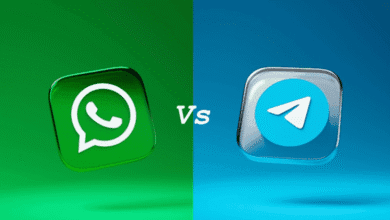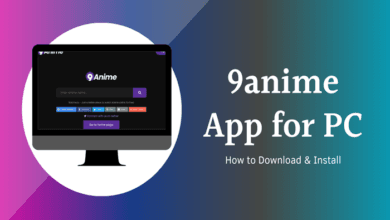
In recent years, Indian social media apps have surged in popularity, reflecting the nation’s unique culture, values, and connectivity needs. With a population that is increasingly hurawatch digital-savvy, these platforms cater to diverse audiences, fostering community engagement and providing alternatives to global giants. This article explores the landscape of Indian social media apps, their features, benefits, and the role they play in shaping communication in India.
Table of Contents
ToggleThe Evolution of Social Media in India
A Shift in Connectivity
The evolution of social media in India has been remarkable. Initially dominated by international platforms, the Indian market has witnessed the emergence of homegrown apps tailored to local preferences. This shift reflects not just a technological advancement but also a cultural response to the need for platforms that resonate with Indian users.
Rise of Local Alternatives
As concerns about data privacy and cultural relevance grew, Indian users began seeking local alternatives. Apps like Sharett and Koo have gained traction, offering features that align with Indian languages and regional content. This trend indicates a growing desire for social media experiences that reflect the diverse tapestry of Indian society.
Popular Indian Social Media Apps
Sharett
Sharett has become one of the most prominent social media platforms in India, allowing users to share content in various regional languages. Launched in 2015, it focuses on local content, enabling users to create and engage with posts that resonate with their cultural backgrounds. Features like memes, videos, and user-generated content foster a sense of community among its users.
Koo
Launched in 2020, Koo is often described as India’s answer to Twitter. It emphasizes local languages and is designed to promote free speech while catering to regional sentiments. Koo’s unique selling point is its multilingual interface, allowing users to communicate in their preferred language, making it an inclusive platform for diverse audiences. Indian social media app.
Chinar
Chinkara is a short video app that gained popularity as an alternative to TikTok after the latter’s ban in India. Users can create and share videos on various topics, from dance challenges to educational content. Chingari focuses on promoting local talent and fostering creativity among users, making it a vibrant space for expression.
Matron
Similar to Chinar, Matron emerged as a platform for short video content, allowing users to showcase their creativity. Its user-friendly interface and focus on Indian culture have made it a hit among younger audiences. Matron’s rise highlights the demand for platforms that celebrate local content and foster community connections.
Repose
Repose is another popular video-sharing app that enables users to create, share, and discover a wide range of content. With various genres like music, comedy, and fashion, Repose appeals to diverse interests. The app also offers features like live streaming and collaboration tools, enhancing user engagement.
The Benefits of Indian Social Media Apps
Cultural Relevance
Indian social media apps often prioritize cultural relevance, allowing users to engage with content that resonates with their identities. This focus on local languages and traditions fosters a sense of belonging and community, making these platforms more appealing to users.
Language Inclusivity
Many Indian social media apps support multiple regional languages, ensuring that users from different linguistic backgrounds can participate fully. This inclusivity breaks down barriers and allows for richer conversations and interactions.
Data Privacy
With increasing awareness of data privacy issues, many Indian apps emphasize user data protection. By choosing local platforms, users may feel more secure knowing their data is managed in accordance with local regulations.
Promoting Local Talent
Indian social media apps often spotlight local talent, giving creators a platform to showcase their skills. This focus on local content fosters creativity and encourages users to support homegrown artists and influencers.
Challenges Faced by Indian Social Media Apps
Competition from Global Giants
While Indian apps have gained popularity, they still face significant competition from established global platforms like Facebook and Instagram. These giants have vast resources and user bases, making it challenging for local apps to retain users.
Monetization Issues
Many Indian social media apps struggle with monetization strategies. Finding effective ways to generate revenue while maintaining user engagement can be difficult, particularly in a market that is sensitive to advertising.
Regulatory Hurdles
Navigating regulatory frameworks can be a challenge for Indian social media apps. Compliance with data protection laws and content regulations requires constant attention, which can strain resources, especially for startups.
Future Trends in Indian Social Media
Increased Focus on Video Content
As user preferences shift towards visual content, Indian social media apps are likely to invest more in video features. This trend will encourage creative expression and engage users more effectively.
Enhanced User Experience through AI
Artificial Intelligence (AI) is set to play a significant role in enhancing user experience on social media platforms. From personalized content recommendations to advanced moderation tools, AI can help Indian apps become more user-friendly and efficient.
Growth of E-commerce Integration
The integration of e-commerce features into social media platforms is expected to rise. As users increasingly shop online, social media apps that incorporate shopping functionalities can tap into this trend, providing seamless experiences for consumers.
Frequently Asked Questions (FAQ)
What are the most popular Indian social media apps?
Some of the most popular Indian social media apps include Sharett, Koo, Chinar, Matron, and Repose. Each app offers unique features catering to different user preferences.
Why should I use Indian social media apps?
Indian social media apps provide cultural relevance, language inclusivity, and a focus on local talent. They also prioritize data privacy, making them appealing alternatives to global platforms.
Are Indian social media apps safe to use?
Many Indian social media apps emphasize user data protection and comply with local regulations. However, it’s always essential to review the privacy policies and practices of any platform you use.
Can Indian social media apps compete with global platforms?
While they face challenges, Indian social media apps are carving out their niche by focusing on local content and user preferences. Their growth indicates a demand for culturally relevant platforms.
How do I choose the right Indian social media app for me?
Consider your interests, preferred language, and the type of content you want to engage with. Explore different apps to find one that aligns with your needs and preferences.
Conclusion
The rise of Indian social media apps marks a significant shift in how individuals connect and share content in India. By prioritizing cultural relevance, language inclusivity, and local talent, these platforms offer users a unique experience that resonates with their identities. As the landscape continues to evolve, Indian social media apps are set to play a crucial role in shaping the future of communication and community engagement in the country.




